Sushi Bike review: the flagship killer of the e-bike world
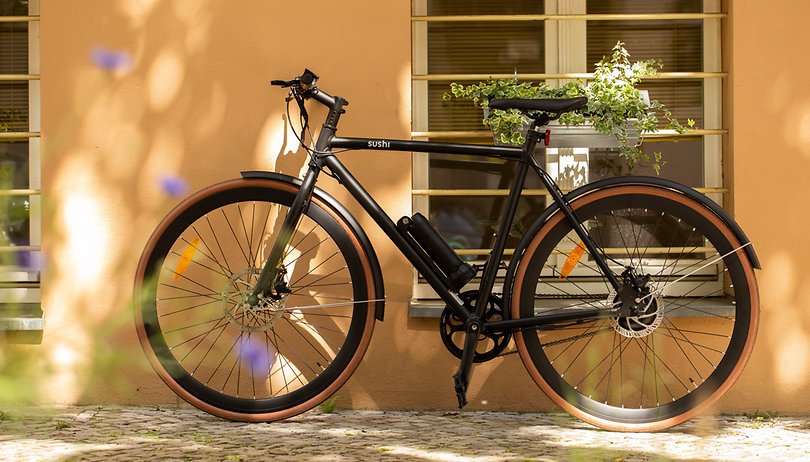

If you are looking for an e-bike these days, you probably have a fat wallet. Most e-bikes cost several thousand dollars, are networked, and packed with electronics. If you are just looking for an attractive e-bike without a lot of frills, you should definitely check out the Sushi Bikes. We tested the Maki M2 model for one week under the hardest physical use for you.
What does the Japanese food sushi have to do with an e-bike? Both don't really go together, do they? But at the same time, the name sticks in your head. If you then put the name Joko Winterscheidt (German actor and presenter) into the mix, you could think that such an e-bike is already in the upper league with VanMoof and Cowboy. Far from it, because the Sushi Bikes of Andy Weinzierl and his prominent investor do not cost a thousand bucks. More precisely, just €999.

An e-bike for under $1,000? What can the Sushi Bike do?
The Sushi Bike is available in different variations, or should I not better say 'flavors'? The Makis come as classic men's bikes with a straight top tube and are available in three frame sizes (50, 55, or 60 cm). The three California versions with their curved top tube are more like the classic ladies' bikes and are available in only one frame size. All frames are made of aluminum, and the fork is made of steel and is unsprung. All in all, the Sushi bike weighs only 15 kilograms.
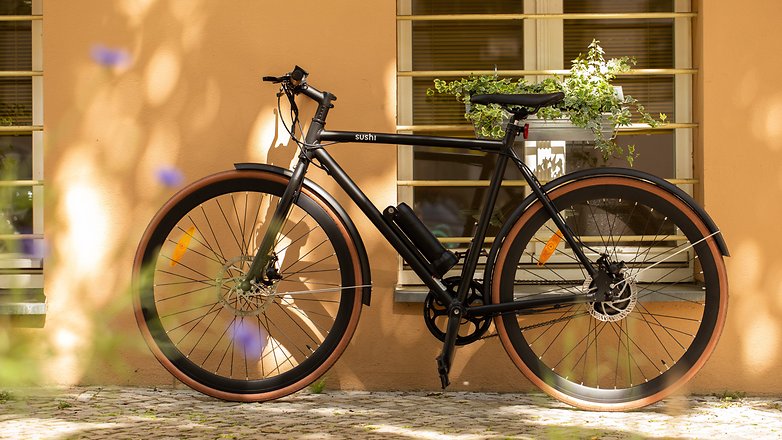
About taste, one can surely argue, so surely also about the look of the Sushi Bike. Personally I find the very clean and puristic look with the brown accents on the tires and grips of the handlebars very attractive. Even the removable battery mounted on the frame fits the Sushi Bike, because it looks like a drinks bottle. The motor in the rear wheel is also inconspicuous so that the Sushi Bike still looks like a conventional single-speed bike even at close distance.
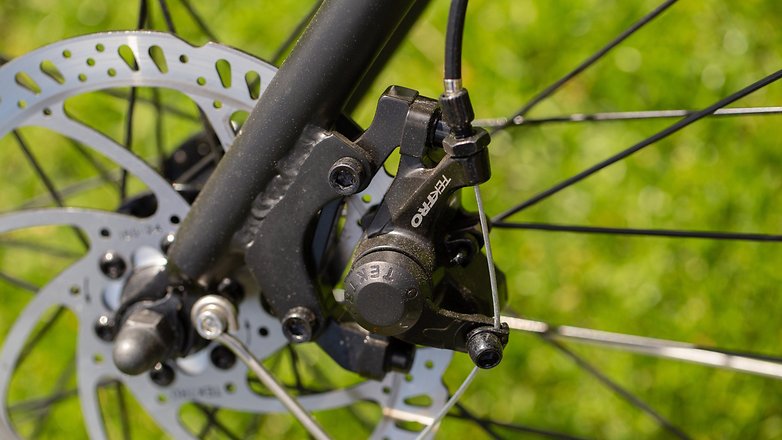
Technology without frills
Most modern e-bikes can be unlocked, configured, and also located via a smartphone. But do you really need so much technology to complete your daily commuter route during the week? In my opinion, no, that's why the simple technology of the Sushi Bike is so good. It works completely without a smartphone because there is a small control unit attached to the handlebars with which you can control the motor. In total there are three levels of support, which can be easily selected via this control unit. Of course, you can also switch off the support completely and use the Sushi Maki M2 as a regular single-speed bike.
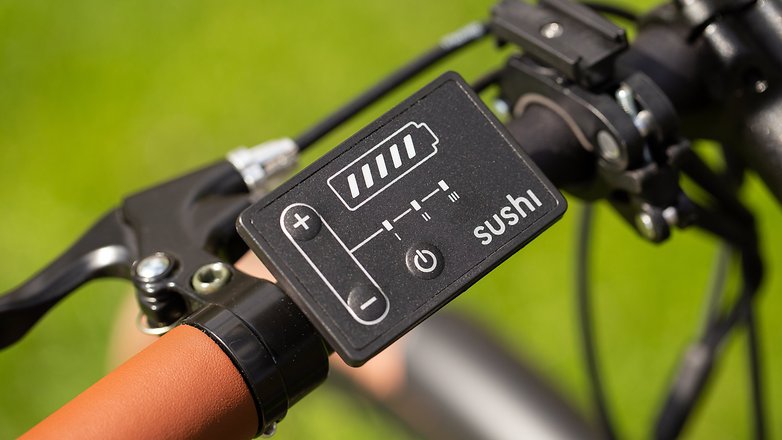
The motor is powered by a removable battery. This battery has a capacity of 124 Wh and should guarantee a range between 30 and 60 kilometers. This is absolutely sufficient to cover a typical daily commuter distance. Should it not be enough, you can simply remove the 800-gram battery and fully charge it with the power supply unit within 3.5 hours. A practical feature of the battery is that it can also be used as a power bank for smartphones, tablets, or speakers. So nothing stands in the way of a small party or a romantic picnic in the park. Wow!
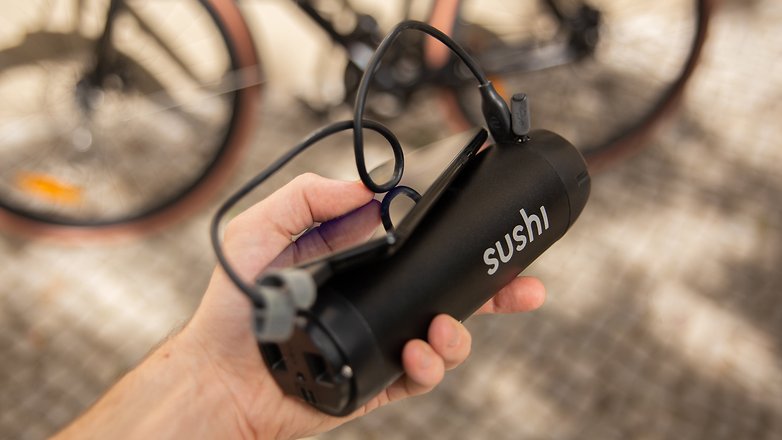
If you buy a Sushi Bike, you should remember that you get a nearly naked e-bike. Mudguards, stands, and luggage racks are not shipped as standard. These can be ordered as extras. Speaking of ordering: you can have the Sushi Bike delivered to a cycle dealer near you. The dealer will set up the bike for you for a fair fee. Of course, you can also order the bike to your home and mount the front wheel, adjust the handlebars, and everything else that is necessary to make the bike ready to ride yourself.
Sushi Bike Maki M2: technical specs and price
| Power | 200 watts |
|---|---|
| Battery | Removable 125 Wh battery with USB-A connection for other devices |
| Range | Between 30 and 60 km |
| Charging speed | Full in 3,5 hours |
| Brakes | Mechanical Tektro disc brakes |
| Frame | Aluminum frame in three sizes (50, 55, and 60 cm) |
| Tires | Rims: Power 700C, 28-inch, 36H drop center Tyres: Kenda K-193, 700 x 28C |
| Speed | Electrical support up to a maximum of 25 km/h |
| Weight | 15 kg including battery |
| App | None |
| Price | €999 |
A hard ride, but smooth in everyday life
For our test, we got the Sushi Bike Maki M2. For one week I was able to experience the e-bike in Berlin and the weather was not always gracious to me. Right on the first day, it rained like buckets and the streets were covered with big puddles. What was exciting here was that the Sushi Bike still had good traction.
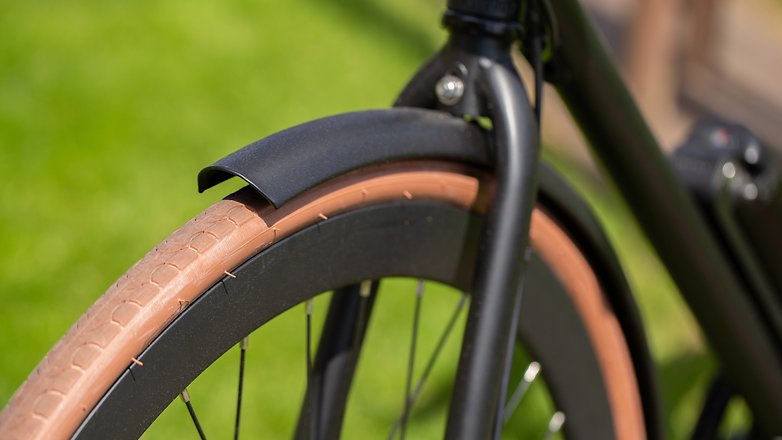
In the following days, the weather was better and dry and it soon turned out that with the medium support level you can easily maintain a comfortable cruising speed. If you want to accelerate a bit faster, no matter if at the traffic lights or for an intermediate spurt, just switch to the highest support level, and the full 200-watt thrust of the rear engine will push you forward. Most of the time I only used this level to overcome slopes more evenly. But it is no comparison to the boost of a VanMoof S3.
The Sushi Bike come to a halt well. In the beginning, the brakes squeaked, but after a few brake applications the two-disc brakes were applied and the squeaking was gone.
Conclusion after one week: hard, but hearty
After an intensive week with the Sushi Bike Maki M2, I have to say that this e-bike probably offers one of the best value for money option in this market. It is simple, practical, and looks damn good at the same time. In everyday life, I found that the Sushi Bike provides driving fun immediately.

Only one thing you have to be prepared for: the e-bike is built for sport, not comfort. Bumps go almost unfiltered into your buttocks and that can be really painful. It is best to get another saddle for the Sushi Bike. Even if the battery runs out on the way, because you forgot to charge it, the bike can convince as a single-speed even without electric support. All in all, the Sushi Bikes are great e-bikes for everyday use, which you can also afford. This is the e-bike for everyday city folk.
Source: Sushi Bikes








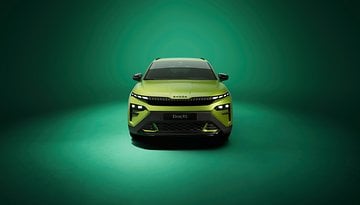

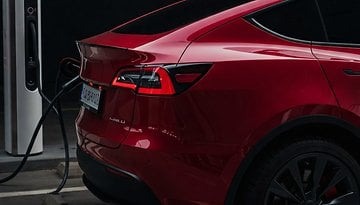









Cool that it weighs only 15 kg
Frankly speaking, I would like to have one.